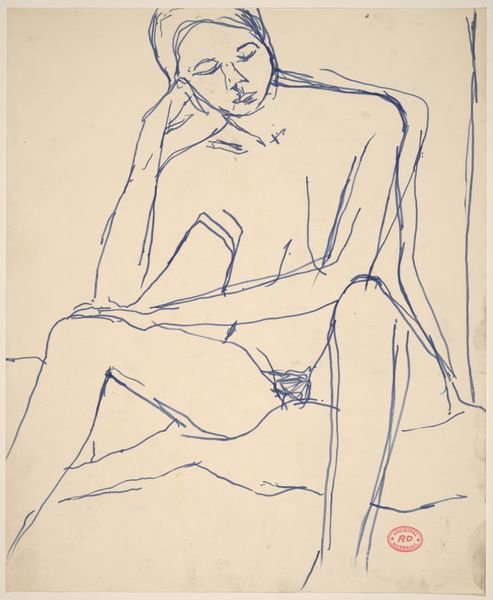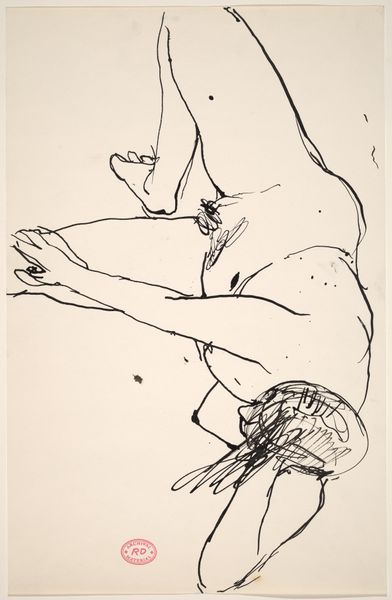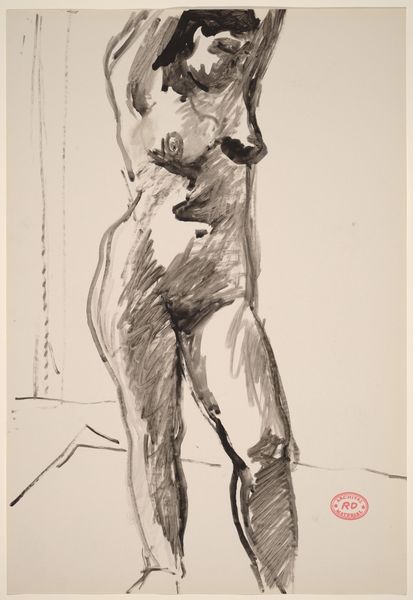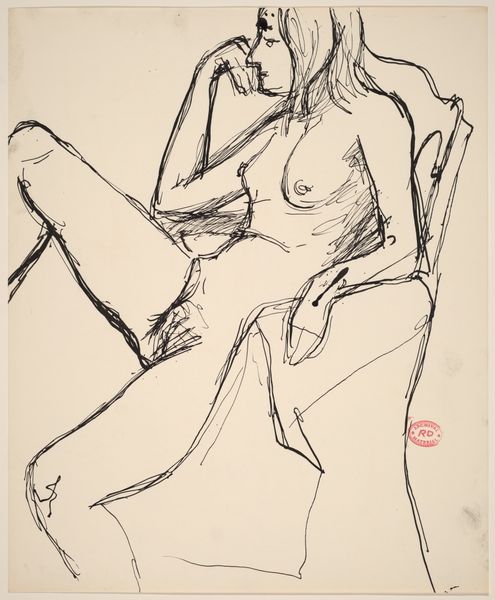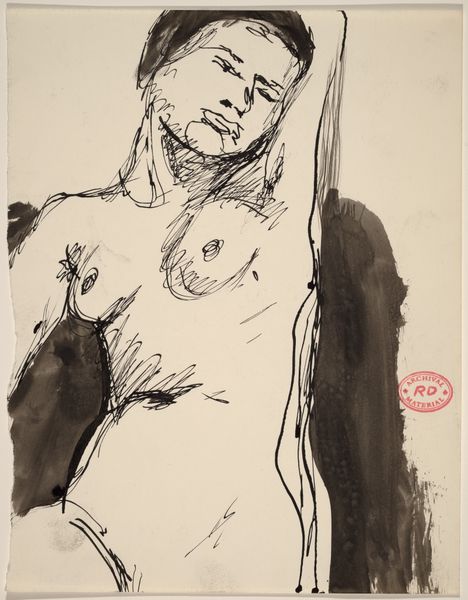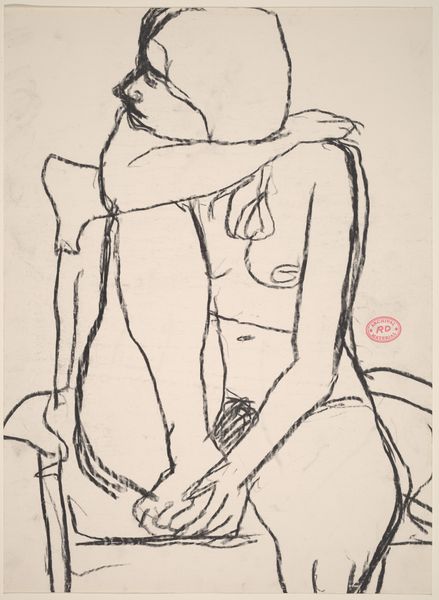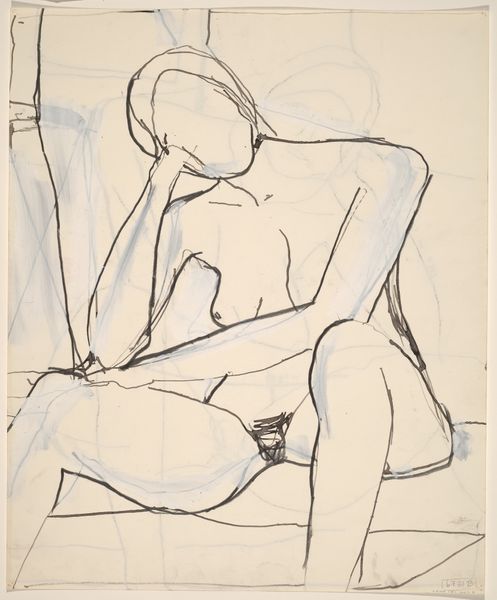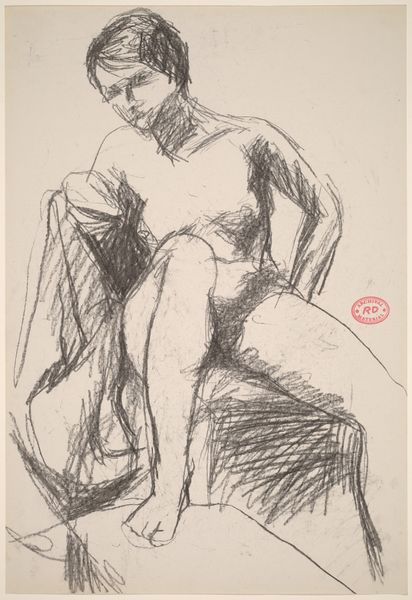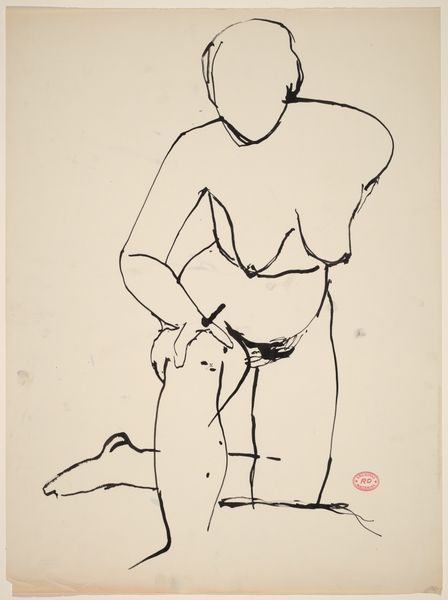![Untitled [seated nude with her right arm resting on right her knee] by Richard Diebenkorn](/_next/image?url=https%3A%2F%2Fd2w8kbdekdi1gv.cloudfront.net%2FeyJidWNrZXQiOiAiYXJ0ZXJhLWltYWdlcy1idWNrZXQiLCAia2V5IjogImFydHdvcmtzLzQ5NmVjYTEwLWRiMWQtNDVmNi1hOTVmLWUzOTZiNjM0ZmFlNy80OTZlY2ExMC1kYjFkLTQ1ZjYtYTk1Zi1lMzk2YjYzNGZhZTdfZnVsbC5qcGciLCAiZWRpdHMiOiB7InJlc2l6ZSI6IHsid2lkdGgiOiAxOTIwLCAiaGVpZ2h0IjogMTkyMCwgImZpdCI6ICJpbnNpZGUifX19&w=3840&q=75)
Untitled [seated nude with her right arm resting on right her knee] 1955 - 1967
0:00
0:00
drawing, ink, pen
#
abstract-expressionism
#
drawing
#
ink drawing
#
pen sketch
#
figuration
#
bay-area-figurative-movement
#
ink
#
line
#
pen
#
nude
Dimensions: overall: 43.2 x 31.8 cm (17 x 12 1/2 in.)
Copyright: National Gallery of Art: CC0 1.0
Curator: Richard Diebenkorn created this piece, an "Untitled [seated nude with her right arm resting on right her knee]" sometime between 1955 and 1967. It's rendered in ink, a pen sketch really, on paper. Editor: There's an almost painful intimacy to it. The raw, unapologetic lines and the exposed body language speaks volumes. I see a commentary on the vulnerability inherent in the act of being seen, a power dynamic perhaps? Curator: I think you're onto something there. Given Diebenkorn’s engagement with Abstract Expressionism, we might interpret the visible pen strokes and stark lines as representing the artist's process, his presence made visible on the page, engaging directly with this form. But I wonder what institutional pressures shaped Diebenkorn's specific approach to figuration. The mid-century art world had very specific expectations about representing the female form. Editor: Exactly! The piece makes me question who gets to represent whom, and for what purpose. It’s impossible to ignore how art history consistently frames women as objects of observation, stripping away their agency, their identities. Diebenkorn’s choice to leave the face undefined seems almost…deliberate in obscuring her humanity? Curator: I see it more as a rejection of idealized forms. It avoids essentializing "woman" but the tension remains. Are the drips and spatters accidental or are they supposed to evoke a feeling or further obscure a legible, coherent presentation? Editor: Those ink spots add an element of chance and also messiness – challenging traditional, pristine notions of beauty and control that historically plague artwork about women. We also cannot deny that this artist worked in a context saturated in sexism so his awareness is important to gauge when trying to consider intent. Curator: Ultimately, the drawing exists as part of a wider cultural conversation. His other drawings during this time period depict figures and urban scenes from everyday life. Editor: Right. So, beyond the aesthetic experience, we must address questions of power, representation, and the politics of looking to engage critically with a seemingly simple pen and ink drawing. It’s a challenge, and an opportunity. Curator: Indeed. This artwork really encapsulates so much of what made this period of art so very complicated in its pursuit of a new visual language and relationship to its historical past.
Comments
No comments
Be the first to comment and join the conversation on the ultimate creative platform.
